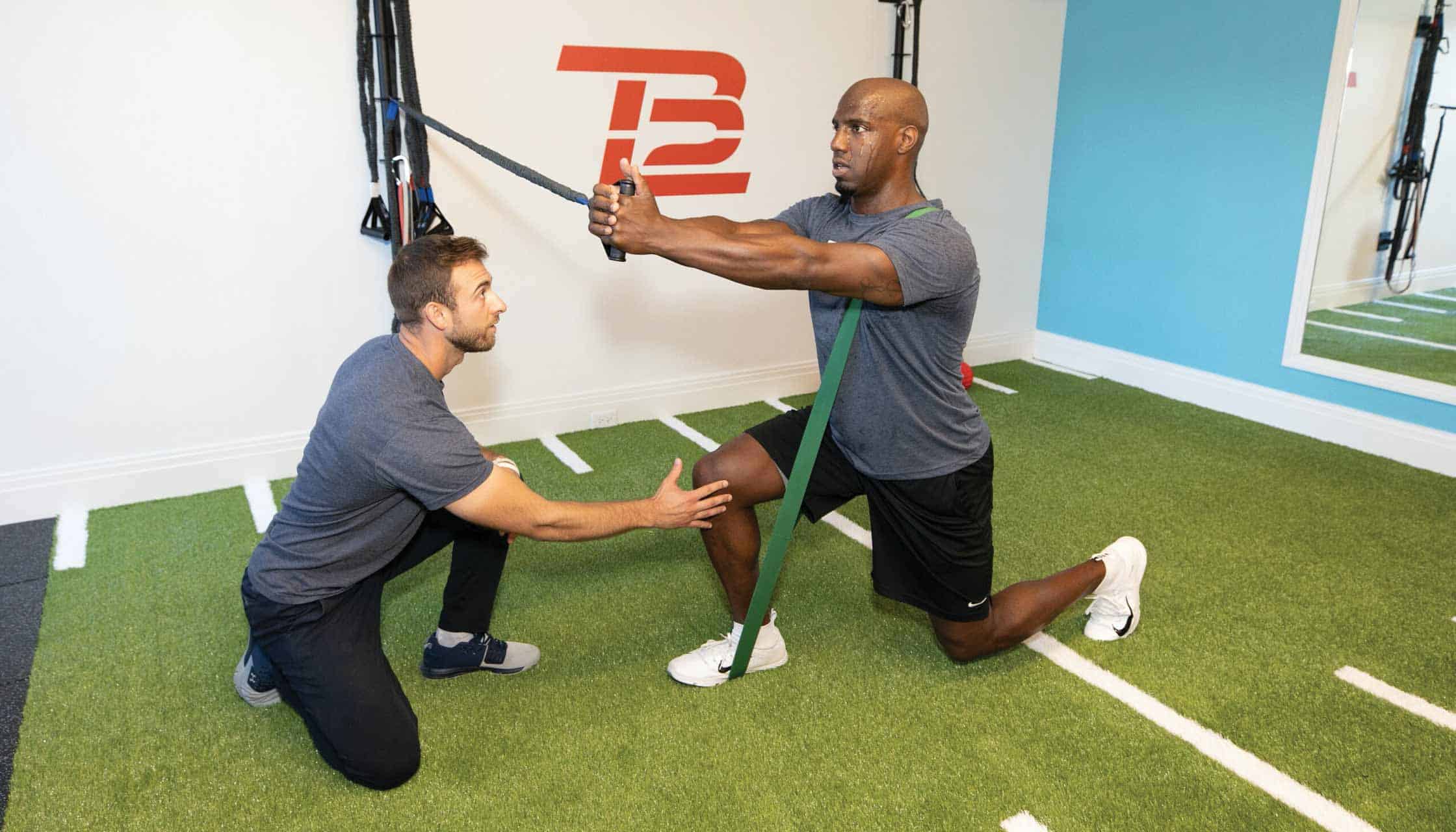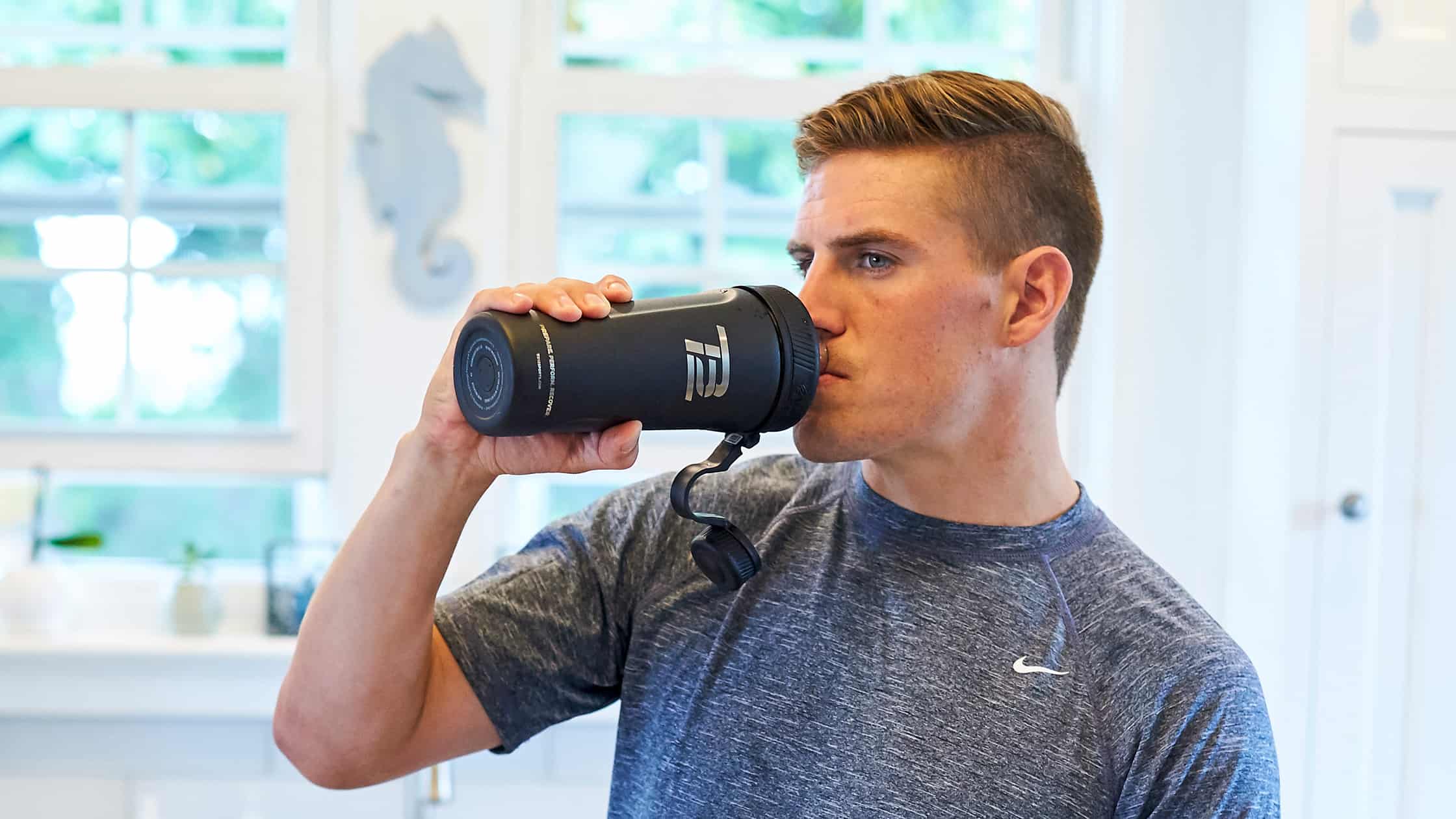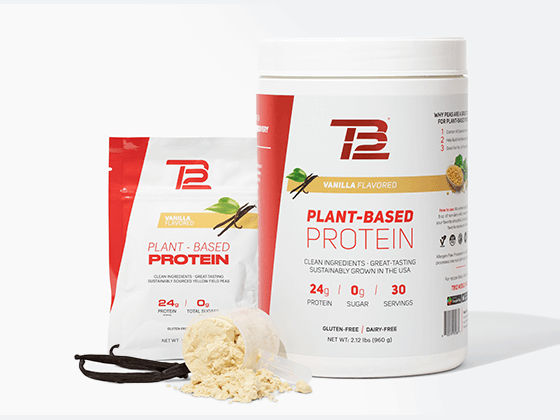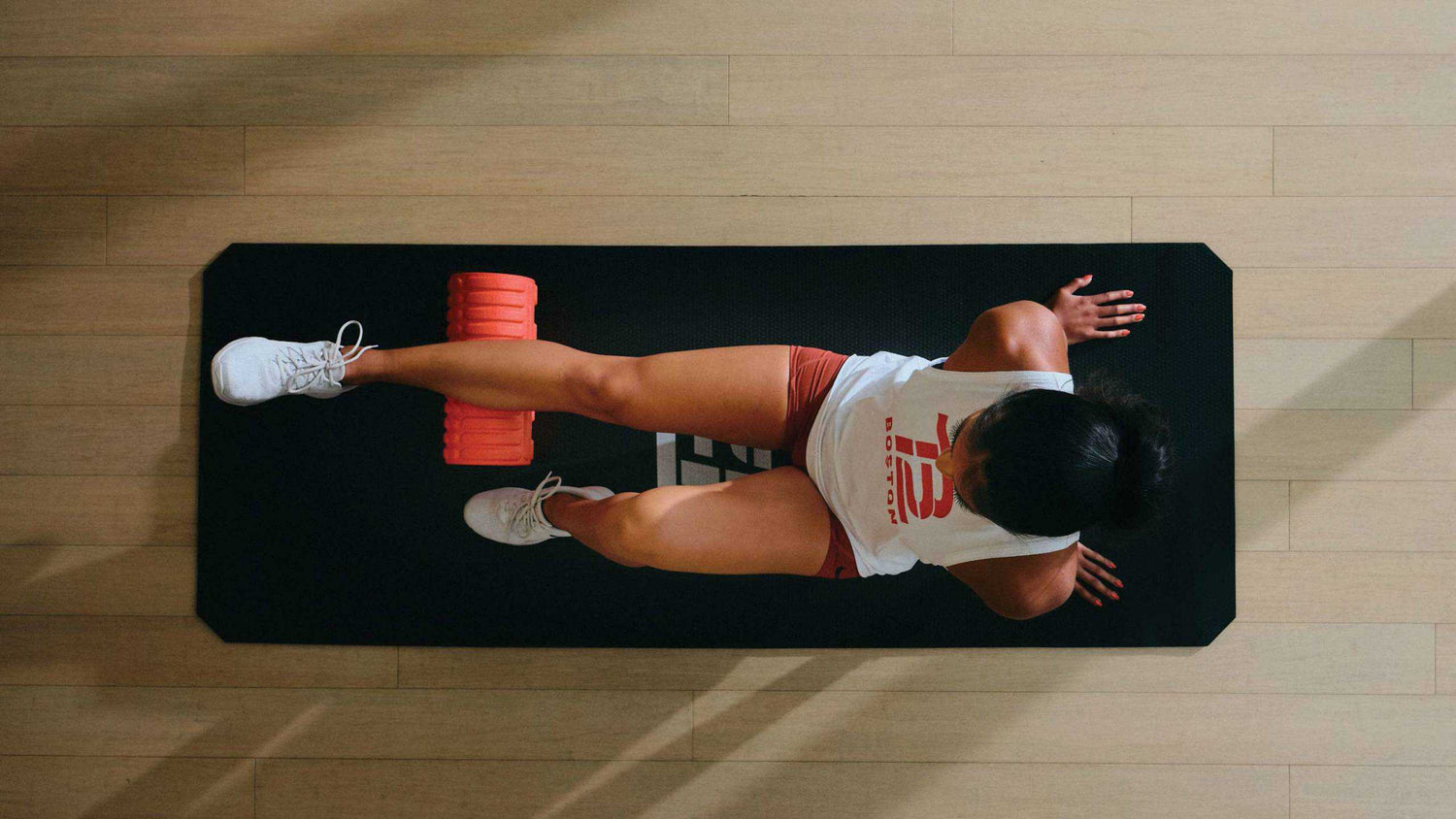At TB12, we believe a healthy cycle of performance and recovery is the key to reaching your potential now and extending your prime much later. When you’re primed to perform and ready to recover, your personal best can last as long as you live it.

Your performance and recovery are intimately tied together – you can’t perform at your peak if you don’t prioritize healthy recovery, and the habits you develop in your training need to extend into your recovery.
In order to maximize your performance in any walk of life, you need to match hard work with a diligent recovery and restoration program. The same habits that have driven Tom Brady’s 20-plus year football career can and should be used by those juggling the stresses of work, life, and sport.
We sat down with experienced team members to explain why each step is important and how to accomplish it. Keep going and set yourself up for performance and recovery success with our in-depth TB12 Performance and Recover Game Plan.
Here are 12 things you can do every day to improve your performance and accelerate your recovery:
Start and End Your Workouts With Pliability
If you want to maximize your performance and accelerate your recovery, pliability work using one of our TB12 Vibrating Pliability Devices should be an integral part of your daily routine. Pre-workout pliability work benefits you better prepare for the workout ahead. It helps you stay avoid injury and get the most out of your workouts by priming our muscles to fully perform at their best.
Post-workout pliability focuses on reducing inflammation and countering lactic acid buildup. This allows blood to circulate more freely and expedites your body’s recovery process by helping muscles return to their natural long and softened state, faster. Ultimately, you’ll be able to work out more frequently as you begin to integrate post-workout pliability work into your routine.
Here’s What You Do: Spend anywhere from 5 to 15 minutes on pliability work before every workout, practice, or game to activate your muscles and prepare them for the task at hand. Use your Vibrating Pliability Roller or Sphere to target the key muscle groups you’ll be using during your workout – each for at least 30 to 60 seconds.
Kick off your post-workout recovery with anywhere from 5 to 15 minutes of pliability work after your workout ends. This stimulation of your muscles will help reduce inflammation and lactic acid buildup in your muscles following exercise. Use your Vibrating Pliability Roller or Sphere to target any muscle groups that are active or fatigued from your workout – each for at least 30 to 60 seconds.

Hydrate Consistently With Electrolytes
Staying hydrated is one of the simplest things you can do to keep yourself healthy and accelerate muscle recovery, but most people are still chronically dehydrated! If you want to maximize your ability to perform and recover, you need to make hydration a habit and fully commit to it. Hydrate consistently throughout the day, and enhance your hydration by adding electrolytes to your water.
Our TB12 Electrolytes include all the minerals your body needs to function at its best – sodium, potassium, magnesium, and zinc – without the sugar that’s commonly found in sports drinks and many other electrolyte beverages.
Here’s What You Do: Start by drinking half of your body weight in fluid ounces of water every day. We refer to this as establishing a “hydration baseline.” Every day, your goal should be to reach your hydration baseline at minimum. So, if you weigh 130 pounds you would drink 65 fluid ounces of water, if you weigh 180 pounds you would drink 90 fluid ounces of water, and so on.

Fuel Your Body to Perform and Recover
A healthy diet is a balanced diet – that’s why we emphasize eating a local, seasonal diet and we recommend nutrient-rich, whole food. You can’t train or recover well if you deprive your body of the necessary nutrients. No matter your activity level, if you’re not fueling your body with healthy foods, your body will never be able to function at its peak.
A crucial part of fueling your body for the best possible performance and recovery is limiting inflammation. Chronic inflammation slows down your recovery and limits your body’s ability to perform. If you focus your diet toward anti-inflammatory foods (real foods, mostly plants) you can enhance your health, recovery, and performance. The foods you eat should support your healthy active lifestyle, not stand in the way of it, so always remain mindful of foods that can do the most inflammatory damage.
Here’s What You Do: We recommend filling up on plenty of fresh, organic fruits and vegetables and hormone-free, antibiotic-free lean meats. Limit your consumption of pro-inflammatory foods – especially fried foods, processed meats, and foods with added sugar, or refined carbohydrates.

Adapt Your Workouts to Your Goals
It’s crucial to train with movements that mimic the demands that your sport or activity puts on your body — both in what you’re doing and how fast (or slow) you’re doing it. We call this training at the speed of sport. We often see people training in ways that don’t support the movement or functional strength associated with their goals. A few alterations to your routine will ultimately enable you to trainer smarter and with more efficiency.
Here’s What You Do: Start by identifying the goal of your training – whether it’s a sport you play, an event you’re preparing for, or your afternoon workout, you need to ground yourself in a purpose. Your workouts and training should prepare you for your sport or activity and allow you to train functionally in order to mimic the demands placed on your body. If you’re a golfer, your focus any time you train should be on performing exercises that help you play better on the course – specifically by training the same movements that your body needs to perform during the swing. Focus on exercises that will have a tangible impact on your body’s ability to perform the activities or sports you love, this kind of deliberate training is the best way to improve.

Prioritize Form First
When you’re moving with improper form, you’re training your body to move the wrong way Proper form enables you to engage the specific muscles you need for the movement you’re doing. The connection between your brain and your body is forged through repetition. This repetition is critical for not only avoiding injury, but getting the most out of each and every exercise.
Here’s What You Do: Take it slow. Five perfect sets that engage the right muscles are better than 10 that don’t. Have a friend or training partner observe your form, so you can get feedback on how you’re performing the exercise. You might feel like you’re using the right form when you’re actually not. Try training in front of a mirror so you can keep track of your own form! You can also ensure your motions are fluid and accurate. If you don’t have a mirror handy, record your at-home exercise routine on your phone and go back to watch for areas you can improve on.

Train to Avoid Injury
We love resistance bands because they allow you to train with a large, fluid range of motion that improves your functional strength, stability, and mobility without overloading your muscles and joints. Bands allow you to do any exercises you’d normally do in the gym with a lower risk of overload and injury when compared to traditional weight-based strength training.
The most common misconception about training with resistance bands is that they’re just for rehab or toning muscles and won’t actually get you stronger or help you build muscle mass. This couldn’t be further from the truth. Different resistance bands offer varying levels of tensile strength, meaning you can build up to higher resistance levels much like you would use heavier weights to enhance a workout.
Here’s What You Do: There’s no training tool more useful than resistance bands, so start there! Be sure to include pliability before your workouts to activate your muscles and prime them to perform, and and focus on proper form throughout each exercise. Train smarter by adding active recovery days to your weekly routine, and always pay attention to how your body feels during training in order to avoid overexertion and injury.

Integrate Active Recovery Workouts
Recovery is an essential part of the TB12 lifestyle. When you put as much focus on recovery as you do on your training, your performance will reflect it. But recovery isn’t just resting; it’s a multifaceted and active approach. While days off (resting) help prevent overexertion, they’re not always the most effective way to help our body recover. That’s why we emphasize the importance of active recovery. Active recovery can sometimes be used as a catch-all term describing any activity done in place of a high-intensity workout to help accelerate the recovery process. At TB12, we view active recovery workouts as a combination of lower-intensity resistance band and bodyweight exercises, which promote enhanced blood flow throughout your body.
Here’s what to do: Instead of simply resting on your recovery days, commit to working in lower impact, active recovery exercises. Exercises like glute bridges, front planks, lateral band walks, and bodyweight squats are some of our favorite ways to get moving and promote recovery without putting too much strain on your body. These exercises, combined with 10-15 minutes of pliability work will help relieve muscle tension, improve blood flow, and enhance your overall mobility.

Consume Protein to Support Muscle Recovery
Eating or drinking protein after your workout gets your body into optimal recovery mode. Depending upon your size and level of activity, 20 to 30 grams of protein will give your body what it needs to jumpstart the essential process of muscle repair. Drink it in a shake or smoothie, or consume a protein-rich meal. Seek lean protein whenever possible, especially turkey, fish, and chicken and plant-based proteins from nuts, seeds, and legumes.
Not all protein supplements are created equal. The quality of the protein matters, and greatly depends on its sourcing and processing. We formulate our TB12 protein powders with the highest-quality ingredients and minimize allergens and artificial ingredients — making our TB12 Plant Based Protein vegan, non-GMO, and soy-free, both with no artificial sweeteners, colors, or unnecessary fillers.
Here’s What You Do: Aim to consume half your body weight in grams of protein each day – especially protein from sources such as lean meat or nuts, seeds, and legumes. Prioritize consuming your protein through the foods you eat whenever possible, and supplement with whey or plant-based protein powder if needed to ensure you’re consuming enough protein on a consistent basis.

Supplement According to Your Performance and Recovery Goals
We like to stay true to the definition of “supplement” – something that complements or enhances other things, like your diet, when added. While we’d love to eat foods that fulfill 100% of our nutritional needs every day, it’s not always realistic. The right supplements can help ensure that you get all the vitamins, minerals, and nutrients your body may be lacking. Think critically about your goals and evaluate your current habits in order to determine the role that supplements should play in your daily routine.
If you're looking for support in pushing through even the sweatiest workouts, checkout TB12 Pre-Workout, chock full of science-backed ingredients to delay lactic acid build-up and promote better blood flow in working muscles!
Here’s What You Do: We believe an ideal supplement has a clear and valuable purpose, strong science behind it, and is what it’s supposed to be: a collection of high-quality nutrients that support your diet, recovery, performance, and ultimately longevity. Supplements should be taken by people likely to be low in a certain nutrient, or who could benefit from more of a certain nutrient. Remember, always consult your doctor or physician before starting to take a new supplement.

Make Cognitive Fitness a Priority
Whether you’re training for sport or crushing a high-intensity home workout, cognitive conditioning is as important as physical conditioning. After all, it’s the brain that controls the movement of the body. The critical movements of training are all decision-based, and typically made in split seconds. If your brain speed is slow, then your play will be slow – no matter how physically prepared you are. That’s why we believe in engaging with activities that exercise your memory, attention, brain speed, intelligence, and aging. Doing so will not only help you perform better in the moment, but it will support your cognition in the long term.
Here’s what to do: Exercise your brain. When thinking about exercising your brain, try breaking it down into six categories: attention, brain speed, memory, people skills, intelligence, and navigation. From there, think about short, but engaging games that support these categories such as word games, puzzles, or even memorizing a song. Commit to playing these games 5-10 minutes each day. For a list of games, check out the TB12 BrainHQ App.

Get Your 8 Hours of Sleep Every Night
Matching up your sleep cycle with the recommendations of sleep experts is a crucial habit to get into. The National Sleep Foundation recommends 8-10 hours of sleep for teenagers, 7-9 hours of sleep per night for anyone ages 18-64, and 7-8 hours per night if you’re over 65. Inadequate sleep can negatively impact your immune system and increase the likelihood of getting sick. Even as little as one hour less sleep per night can have an impact.
If falling asleep and staying asleep are challenging for you, work on establishing a consistent bedtime routine – meditation, breathing exercises, and smart supplementation can all contribute to deeper and healthier sleep. Try turning off all your electronic devices at least a half-hour before bedtime will quiet your mind, and help switch your focus to something relaxing and serene.
It’s crucial to do everything you can to ensure that you’re able to get deep, restful sleep every night. Even something as seemingly simple as the temperature of your room can affect the quality of your sleep, so pay attention to which conditions your body responds best to and replicate them whenever possible. If you’re looking for a healthy sleep supplement we recommend TB12 Sleep, a nighttime supplement to help your body relax before bed, ease into sleep, and get the quality sleep you need to make the most of tomorrow.
Here’s What You Do: Get at least 8 hours of restful sleep per night, and allow your brain and body to fully recover by committing to a nightly routine and a consistent bedtime.

Have a Purpose and Stay Determined
Determination is the engine that drives the TB12 Mindset. If you aren’t determined to be the best version of yourself and committed to self-improvement, then none of these other principles really matter. Determination has to come from within – you have to believe in yourself and be driven by a purpose.
This concept is for everyone – regardless of your goals or whether or not you’re an athlete, determination means that you’re willing to do the extra work required to be great in everything that you do. No shortcuts, no quitting, and no excuses – if you’re truly determined to accomplish something, you won’t let anything stand in your way.
Here’s what to do: Start by identifying what your goal or purpose is. Write it down and keep it by your bed, add it as a note in your phone, or do whatever you have to do to to give yourself a regular reminder of what you’re working towards. When you’re motivated by a purpose like this, you’ll find it’s much easier to stay determined and relentlessly pursue your goals.






